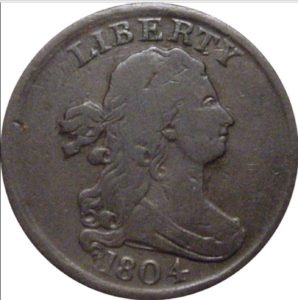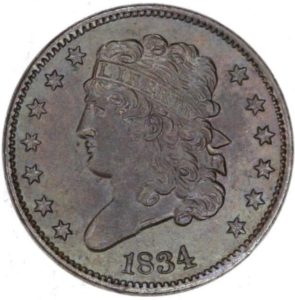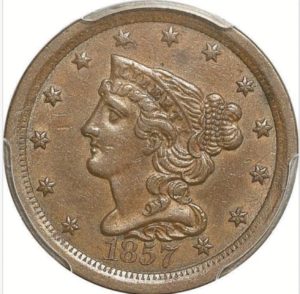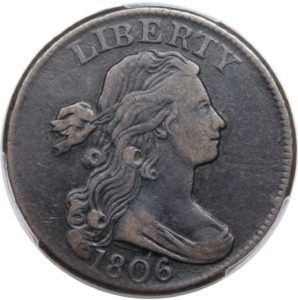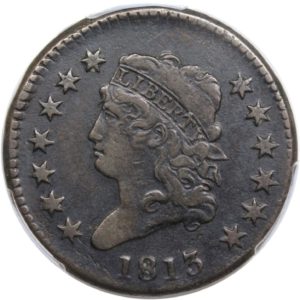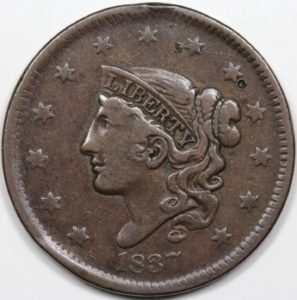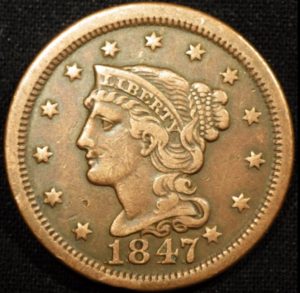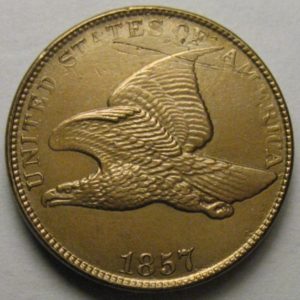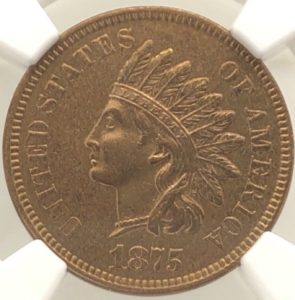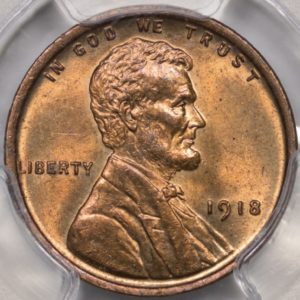Below are the most sought after Half Cents & Cents. Click on the links for a complete overview and links to both the PCGS and NGC price guides.
You can also quickly discover the exact value of your coins with a free appraisal. For fastest service we like Coinfully.com.
Liberty Cap Half Cent (1793-1797)
Minted in 1793 to 1857, the half cent is the smallest denomination ever minted in the United States. It came in different design varieties, including the Liberty Cap Half Cent that was issued from 1793 to 1797. It came in two different versions…READ MORE
Draped Bust Half Cent (1800-1808)
The Draped Bust Half Cent was born when Chief Engraver Robert Scot created a new design of the half cent in 1800. From 1800 to 1808, with the exception of 1801, the coins were produced. In this design, Liberty is amply proportioned and is wearing drapery around her bust. A ribbon tied her hair up. It is believed…READ MORE
Classic Head Half Cent (1809-1836)
The Classic Head Half Cent is an early copper half cent that was produced from 1809 to 1836. It was designed by engraver John Reich and showed Liberty in a different style. Compared to the previous designs for the denomination, the Classic Head Half Cent was issued for a longer period. The scope of the series was…READ MORE
Braided Hair Half Cent (1840-1857)
One of the first regular issue coins the US Mint produced after its establishment in 1792 was the half cent, the smallest US coin denomination ever minted. It was produced from 1793 until 1857, and sported five designs throughout its run. The last design being the Braided Hair Half Cent by Mint Engraver Christian Gobrecht…READ MORE
Draped Bust Cent (1796-1807)
During the early days of the American coinage, the one cent denomination went through a series of design changes. In a span of 5 years, four different designs were created. It was only when the Draped Bust design was introduced in 1796 that the design reached a measure of satisfaction and was continued in use until 1807. For this reason, the Draped Bust Cents experienced high…READ MORE
Classic Head Cent (1808-1814)
The design of the Classic Head Cents appeared in 1808, the 5th redesign in just 15 years of production. The design known as the Classic Head Cent was based on the design of previous large cents but the resemblance is almost negligible. The same design was introduced for the half cent in 1809 and later for the silver…READ MORE
Coronet Head Cent (1816-1839)
The Coronet Cents are the type of cent issued from 1816 to 1839 by the Philadelphia Mint. Its design, the Coronet Large Cent, was sometimes nicknamed Matron Head. This was one of two similar designs that went through several variations. By 1839, the profile of Liberty herself was altered. For each of the year that the Coronet Cents were produced, at least one…READ MORE
Braided Hair Cent (1839-1857)
The public wasn’t always so kind to the large cent design. Criticism has been hurled its way since it first appeared in 1793 to last design in the series, the Braided Hair Cent. It was criticism that prompted another redesign of the large cent – the last – and this time Chief Engraver Christian Gobrecht decided to give Liberty a much more youthful appearance…READ MORE
Flying Eagle Cent (1856-1858)
The large cent design produced since 1793 was not only unpopular, it was also expensive to produce. This was known since the early 1850s, but the last large cent coin with Braided Hair design lasted until 1857. But a replacement, the Flying Eagle cent, was already created in 1856, designed by Chief Engraver James B. Longacre and circulated in 1857 and 1858…READ MORE
Indian Cent (1859-1909)
With its high relief design, the Flying Eagle cent was difficult to strike. Owing also to its unpopularity, Mint Engraver James B. Longacre was asked for redesigns and the eventual winner was the Indian Head obverse and laurel wreath reverse combination. It is said that Mint Director James Ross Snowden preferred the design, known as Indian Head design, because it had the lowest relief and would therefore…READ MORE
Lincoln Cent (Wheat Reverse) (1909-1958)
There was a tradition of not putting a portrait of an actual figure in US currency. That practice lasted for years until 1909, with the release of the Lincoln Cent on the centennial of Abraham Lincoln’s birth. The idea of using a public figure on a US coin is nothing new. Mint Director James Ross Snowden floated the idea of putting Columbus on the cent, but eventually settled with the Indian Head design…READ MORE


